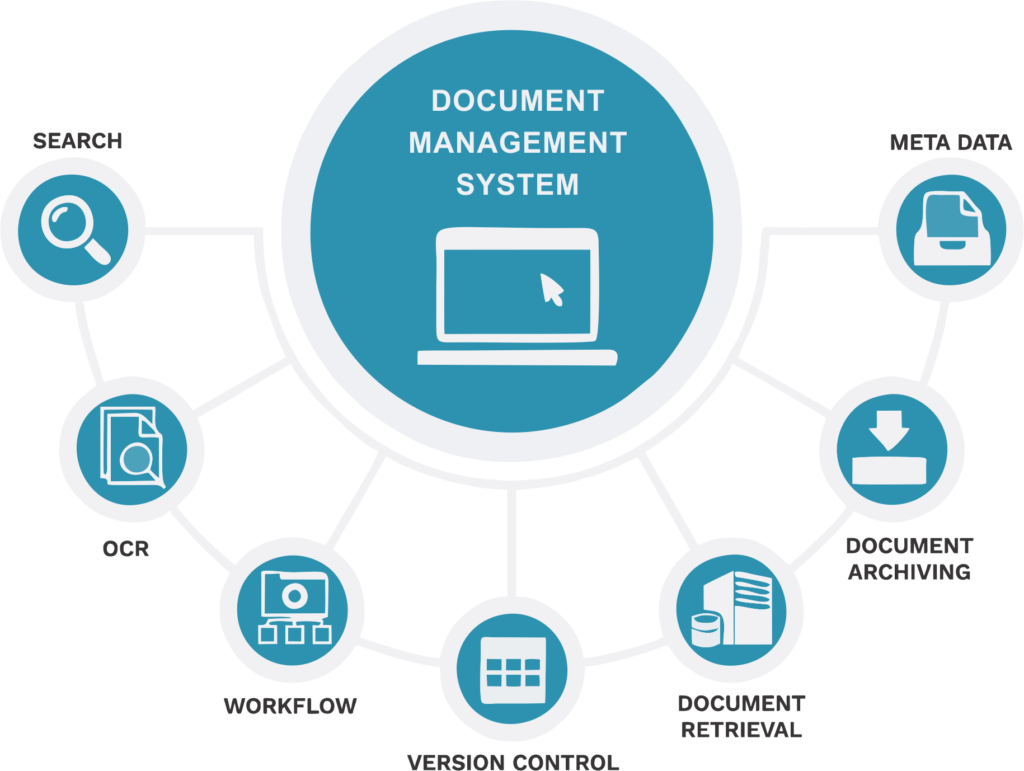Document management systems make a lot of sense for businesses, especially as digital documents and remote work become how business gets done.
What is document management?
Document management refers to how you file, store, retrieve, manage, share, and secure your business documents. Often in business technology, the term document management gets used synonymously with document management system. This, however, misses the reality that if you are in business, you already have some form of a document management system.
For example, storing Word docs and Excel spreadsheets on your PC is managing documents. Using file cabinets to store paper documents is another form of document management.
With this understanding, we can see that the definition of document management is how you store all your documents, both digital and paper.
In the past, managing paper documents meant file cabinets, folders, staples, and paperclips. Today, it likely means those plus digital files like Word, Excel, PDF, image, and an assortment of others you use daily.
f course, the challenge with digital files is organizing, and – once you’ve got a lot of them – making them easy for anyone to retrieve. That’s where a document management system becomes useful.
What is a document management system?
Generally, a document management system refers to secured electronic storage of your documents so that all documents – digital and scanned paper – can be filed, indexed, archived, retrieved, marked up, and shared via encrypted access rights along with system reporting to ensure compliance.
Many systems also include automated workflow functionality. You can preconfigure workflows or create them ad hoc as needed to speed a digital document through an approval process. In this way, documents move much the same way they did as paper. Only this time, they aren’t actually moving, making them more secured and easier to find.
When researching document management, you will likely come across the term enterprise content management (ECM). An ECM offers a larger range of features and integrations. For example, you might link it into your customer relationship management (CRM) software. Document lifecycle management – where you manage how long a document is kept – is another common feature of these more robust, enterprise document management systems.
Why companies choose document management systems
A document management system provides many benefits for businesses.
- Simplifies remote work. Paper can’t move from one home office to another at the speed you need it to. Files stored locally on PCs must be found, emailed, or uploaded to be shared. Working in this way minimizes productivity for everyone. Those sharing the file need to interrupt what they are doing while those needing the file must wait.
Document management systems eliminate this problem. The file resides in a single, secured repository anyone can reach from anywhere, meaning no more waiting and fewer interruptions. - Increases productivity. Whether your people work in the office, at the home office, or on the road, everyone can access the files they need, when they need them. Productivity isn’t just about getting more work done though. Sales representatives can get the answers they need while in front of a customer, speeding up the sales process. Automated workflows can accelerate processes like AP, increasing the speed by which you get paid.
- Improves workplace safety. Digital documents eliminate the need to move physical paper, creating touchless document sharing. They also make it much easier to implement a hybrid workplace with a mix of remote and on-site employees.
READ ALSO: Guide to Conversion Rate Optimization in WordPress
